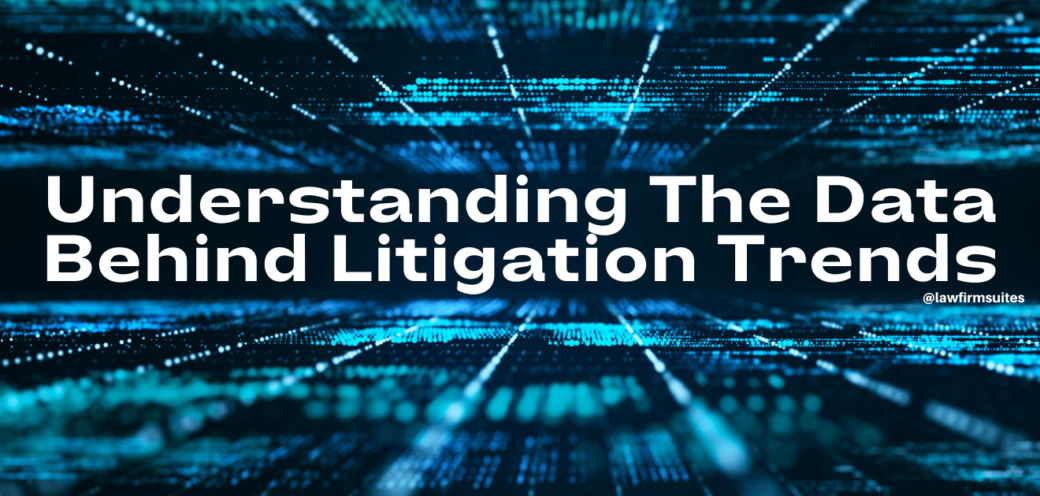In a world where we depend heavily on technology, law firms find litigation data very important. It is a known fact that there are stringent rules to advertising and marketing yourself as a lawyer. Nevertheless, technology has increased the opportunities through which lawyers can do this. In the same way, technology has made it easy to track litigation metrics.
Formerly, litigation trends were studied by undergoing hours of research. Now, we have software that helps with studying and analyzing trends; tools that enable you to carry out research and build a great legal strategy from the comfort of your office. Although these tools have reduced the workload on legal professionals, it is still important to understand the practice of litigation. Litigation trend analytics tools are, of course, only as good as the lawyer who implements the information gotten from them. There are various ways to effectively understand the data behind litigation trends and trend analysis. Over the next few headings, we shall elucidate on some of them.
Using Text Mining Tools
There is a lot of controversy surrounding text mining and the use of text mining tools, especially in case law. However, the fact that text mining can be very useful in the practice of the law cannot be thrown out. The majority of the data we find in statutes, regulations, treaties, news, and dockets are textual. The crux of mining text is to automatically extract valuable, understandable information from the text.
One type of legal data that text mining tools will be very useful for is the data contained in dockets. Dockets are very important because clerks document all the activities that take place in a court case. AssignmentHolic says that actually, it is only right that lawyers refer to them for information on exactly what to do to have a successful case. However, dockets are very voluminous; perusing through hours of activity just to find information on a particular situation can be very tedious. Instead of reading through a docket, it is expedient to use a detailed analysis of a docket instead. This has been optimized to provide you with information that can make or mar your case.
Dockets are analyzed through the use of various text mining tools. Thomas Reuters is an example of a service provider that engages in text mining for lawyers and other professionals. They also produce text mining software. In total, they have processed eight million dockets containing 152 million entries leading to 2.6 million outcomes. Also, they have extracted information relating to 300,000 parties, 500,000 lawyers, 125 law firms, and 6,700 judges from 90 million U.S. state and federal dockets combined. Additionally, writers in the assignment writing service industry use text mining regularly for research. From this, it is evident that text mining can be a great tool for understanding and effectively utilizing legal data.
Using An Employee Reporting System
This approach to using and understanding litigation trend data can be very useful to the lawyers of the legal department of any company; especially one that employs a large number of people. First Analytics formulated a rather unique system that makes this possible.
This employee reporting system is a hotline; one through which employees can anonymously report a contravention of company laws and policies. In this approach to understanding litigation data, the information from these phone calls is used to identify patterns of cases that could be indicators of future legal cases that could be brought against the firm.
The data from the hotline was in the form of unstructured text data; hence, it had to be interpreted. The professionals at First Analytics used text mining tools to decipher the code and group the hotline topics into different groups of offenses and violations (This further stresses the importance of text mining tools). In the end, First Analytics was able to quantify the degree to which certain factors increased and decreased the risk of litigation. They were also able to help experts decipher areas of focus to help reduce litigation risk.
User-Friendly Software
Apart from text mining tools, there are different types of litigation analytic software. It is expedient to use reliable, user-friendly software if you purchase such a service. Here are some of the best suggestions if you are looking into investing in an analytical service: Lex Machina, Context, Westlaw Ridge, Legal Analytics, Gavelytics, and Docket Navigator.
Do Not Depend Wholly On Litigation Trends And Analytics Tools
There is no gainsaying that trends can be very useful in preparing legal strategy. Nevertheless, understanding litigation trends firstly requires the lawyer to use his wit. As technology has advanced, a lawyer can’t just say to software, “do my assignment” and forget about it. Litigation software can eventually only go so far. Furthermore, it is expedient to use various software for this purpose if you can afford it.
Conclusion
Litigation data analytics software is being used by various legal professionals. Truthfully, you run a risk of being outperformed if you do not use any. Nevertheless, understanding the data that you get is an equally important part of the process. As a legal professional, it is advisable to take measures to effectively and timely interpret the data that you get.
Author Bio
Jessica Chapman, a writing editor from Chicago. She is into sport and politics and enjoys traveling. Jessica has worked at BestCustomEssay. She has also worked as a consultant at some of the best dissertation writing service platforms.


